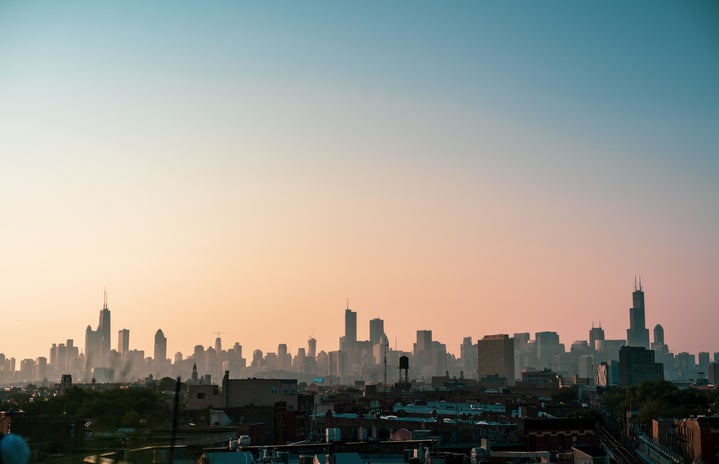As an avid follower and member of the online beauty community, I’ve seen makeup and hair trends pop in and out of the scene since the mid-2000s and the beginning of social media. After suffering everything from foundation lips to hair feathers, it was exciting to see a new focus crop up on Instagram, YouTube, and Reddit: skincare.
The internet’s obsession with skincare can be traced back to the rise of Korean skincare routines going viral. After posts about the 10 to 12-step skincare routine a lot of Korean women had adopted, more people wanted to try it for themselves.
Soko Glam was one of the very first companies to popularize the 10-step process, but said on their website “It’s not about having more products than you can count, but rather about having the right products that do the right things, and using them in the right order.”
Alright, 10 steps seems a little intense, but as someone that has had their share of troubled skin, I was intrigued to learn more.
Living in Utah my whole life I was used to how my skin “naturally” acted, but it wasn’t until recently that I began considering my environment when it came to my face’s clarity and texture.
My mom always stressed the importance of seeing a dermatologist to get the best, most direct way to treat your skin. I still go by this rule today —if you have the means to see a professional, you should.
To get insight about environmental factors and better understand why skin acts the way it does, I contacted my very own dermatologist, Dr. Tanya Christensen. After attending the University of Utah’s medical school, Christensen completed a three year residency in Rochester, New York. She came back to Utah in 2012 and has been working with Intermountain Healthcare since.
Christensen has prescribed me different topical creams as well as medications to fight the blemishes that I’d hoped would have disappeared after high school. But life isn’t always perfect and neither is our skin. The benefit of seeing a professional is getting results often with little to no trial and error.
Our outer appearance is often assumed to be something we can always control. But if you’ve ever had skin problems, you know how disheartening it can be to wake up and see more blemishes, dryness, or redness than you’d like. The important thing is to not lose hope. Seeing dermatologists has shown me there are a myriad of options to soothe, treat, and protect your face.
But no matter what we’re prescribed, our skin still suffers the effects of a thinning ozone layer and more particulates than we’re able to count.
Christensen said that pollution can even get us while indoors, and that inside air filters can help with sensitive skin issues like eczema. The Royal College of Physicians clinical medicine journal detailed the issue: “Air pollution indoors is just as relevant to ambient outdoor exposures although this is rarely taken into account. . .outdoor pollutants penetrate the home, schools and workplaces.”
But what are pollutants, and how are they bad for us? Christensen said that pollution doesn’t just come from refineries, but things like cigarettes, car exhaust, machinery, and anything else that produces fine particulate matter. These particles are called free radicals.
Free radicals are the toxic byproduct of oxygen gas which cause damage to living cells and tissue through oxidative stress. Oxidative stress means your skin is more reactive, so it can be dry, irritated, red, and even break out when under large amounts of environmental stress.
If pollution irritates and weakens your skin, it makes sense that many high quality creams and serums include antioxidants. Antioxidants provide extra electrons over your skin, so when free radicals come to disrupt the balance the extra electrons from the cream or serum are used rather than electrons from your skin tissue.
Powerful antioxidants are Vitamins A, C, E, and B3. These can be found in foods like blueberries, dark chocolate, beans, spinach and many more.
Examples of antioxidant products are the Lancôme Advanced Génifique Sensitive Serum ($78), Sunday Riley C.E.O. Vitamin C Rich Hydration Cream ($65), and COSRX Triple C Lightning Liquid ($27).
Learning more about my skin and the care it needs has been exciting and eye opening. Free radicals are real little monsters that dry your skin, speed aging, and can do irreversible damage if you go unprotected. Sunscreen is also a super important part to skincare, and should be the last step of your routine before makeup. My favorite face sunscreen of all time is the Supergoop Unseen Sunscreen with spf 40 ($32).
In the Salt Lake valley, where pollution literally sinks in and gets trapped, it’s even more important to not only get your hands on some antioxidants both through food and topical applications. Even one or two extra steps each morning can make a difference to overall texture, moisture, and glow. I know I feel most confident when I know what I’m doing is good for me, and now that confidence can accompany my skincare routine, too.
All media is sourced via hyperlinks



